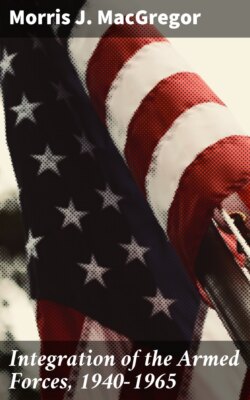Читать книгу Integration of the Armed Forces, 1940-1965 - Morris J. MacGregor - Страница 21
На сайте Литреса книга снята с продажи.
World War II: The Navy
ОглавлениеThe period between the world wars marked the nadir of the Navy's relations with black America. Although the exclusion of Negroes that began with a clause introduced in enlistment regulations in 1922 lasted but a decade, black participation in the Navy remained severely restricted during the rest of the inter-war period. In June 1940 the Navy had 4,007 black personnel, 2.3 percent of its nearly 170,000-man total.[3–1] All were enlisted men, and with the exception of six regular rated seamen, lone survivors of the exclusion clause, all were steward's mates, labeled by the black press "seagoing bellhops."
The Steward's Branch, composed entirely of enlisted Negroes and oriental aliens, mostly Filipinos, was organized outside the Navy's general service. Its members carried ratings up to chief petty officer, but wore distinctive uniforms and insignia, and even chief stewards never exercised authority over men rated in the general naval service. Stewards manned the officers' mess and maintained the officers' billets on board ship, and, in some instances, took care of the quarters of high officials in the shore establishment. Some were also engaged in mess management, menu planning, and the purchase of supplies. Despite the fact that their enlistment contracts restricted their training and duties, stewards, like everyone else aboard ship, were assigned battle stations, including positions at the guns and on the bridge. One of these stewards, Dorie (Doris) Miller, became a hero on the first day of the war when he manned a machine gun on the burning deck of the USS Arizona and destroyed two enemy planes.[3–2]
By the end of December 1941 the number of Negroes in the Navy had increased by slightly more than a thousand men to 5,026, or 2.4 percent of the whole, but they continued to be excluded from all positions except that of steward.[3–3] It was not surprising that civil rights organizations and their supporters in Congress demanded a change in policy.
